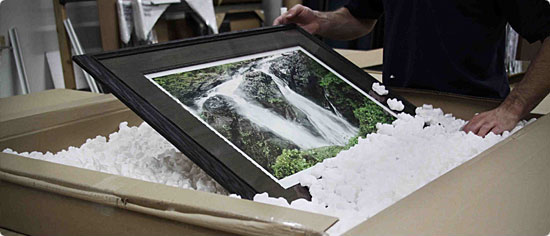How to Move Fine Art
When you’re preparing your home for a move, it’s often easy to get wrapped up in packing the big items and in turn overlooking what’s hanging right on the walls. While it may be tempting to leave packing your fine art pieces until the last minute, save yourself the headache and come up with a plan early on.
While it might seem like a daunting task at first, the good thing about moving fine art is that there are quite a few moving options to choose from. To get you prepared to choose the right option for you, take a look at our professional moving tips.
1. If you have an extensive collection, you might want to take yourself out of the equation and consider hiring professional movers to pack up and transport your artwork to your new home. If you have already hired a moving company to move your other belongings, make sure to ask them if they have experience moving fine art. If their experience is limited, it’s best to look around and find yourself a qualified company to move your artwork. A quick Google search in your area should bring up a few options with reviews that can tell you their level of expertise. When in doubt, it is always better to err on the side of caution and go with the most experienced company.
2. While hiring a moving company to move your fine art is a great option, you might choose to package your collection up on your own for various sentimental, pricing, or convenience reasons. If you do choose this route, remember your artwork is fragile and packaging must be done properly to avoid any damage to the art.
3. One easy option to expedite the process is by purchasing a StrongBox from https://airfloatsys.com. This box has three layers of foam protection to ensure your artwork’s safety in the moving process.
4. You can also easily package up your artwork yourself using a mirror pack box or crate box found at most storage companies or home stores. To do this, make sure to measure your artwork and pick the size that will give you at least 3” of space on each side to give you room for packing.
5. When you’re ready to pack your artwork, first wrap it in glassine paper or a cloth to protect it. For lighter pieces, you can also use tissue paper, but make sure to tape it in place. If your painting has a glass frame, apply masking tape in a criss-cross pattern over the glass before you wrap it. Once it’s covered, wrap your piece in a few layers of bubble wrap, making sure to use special care around the corners, as those are usually the first parts to be damaged in transit. Next, place packing peanuts in the box and slide your artwork carefully in. You want the fit to be tight so the piece does not move around too much in transit.
6. Lastly, if you’re moving across country or are in a humid climate, make sure to save packing until right before you move. You don’t want the heat to warp your piece. You might also want to consider a climate controlled moving truck for long trips to ensure its condition.










